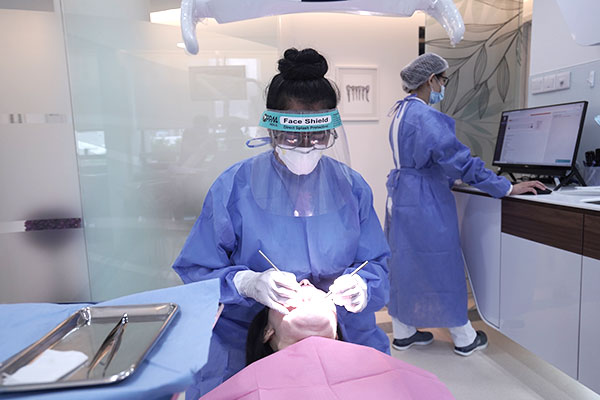Mercury amalgam replacement
Dental amalgam restorations are a route of mercury exposure for the general public. The World Health Organization reports that it is a mixture of mercury and a metal alloy. The usual composition is 45-55% mercury; approximately 30% silver and other metals such as copper, tin and zinc. In 1991, the World Health Organization confirmed that mercury contained in dental amalgam is the greatest source of mercury vapour in non-industrialized settings.
Mercury can be released during placement of amalgam fillings as well as on chewing, drinking hot drinks, teeth cleaning, grinding the teeth and generally when the surface of the filling is rubbed.
Side effects of mercury exposure can include:
- Headaches
- Insomnia
- Cognitive/neurological impairment, memory loss
- Difficulties in verbal and visual processing
- Miscarriage, spontaneous abortions, stillbirth, and low birth weights
- General weakness
- Emotional instability
- Tremors
- Psychological issues
- Endocrine disruption/thyroid enlargement
- Dermatological conditions
- Anorexia
- Delusions/hallucinations
- Hearing loss
- Renal (kidney) problems
- Cardiovascular problems
- Lowered Immunity/ autoimmune disorders
- Reduced fertility
- Gingivitis, metallic taste, excessive salivation, red or white areas in the mouth
- Respiratory difficulties
- Unexplained weight loss
The process of amalgam replacement
Planning for the safe removal and replacement of mercury amalgam starts at your first visit. A full consultation will be carried out where your treatment options and plan will be discussed.
One of our SMART certified friendly dentists will carry out a consultation to discuss your needs and requirements in detail. On the day of treatment, we will welcome you into the clinic, we will re-discuss the process with you before beginning the procedure.
You will be draped, the tooth with the amalgam restoration will be isolated with a rubber dam and further precautions will be taken to remove mercury vapour from the clinical environment. The amalgam will then be removed and replaced with a BPA-free composite or dental ceramic. We will arrange a review appointment with you if this is necessary post-procedure.
Please contact the clinic directly for further information and to arrange a consultation today.

References and further reading
- Environmental Mercury and Its Toxic Effects USEPA (2016)
- Environmental Mercury and Its Toxic EffectsKevin M. Rice,Ernest M. Walker,Jr,Miaozong Wu,Chris Gillette, and Eric R. BloughJ Prev Med Public Health. 2014 Mar; 47
- IAOMT Fact Sheet on Human Health Risks from Dental Amalgam Fillings https://files.iaomt.org/wp-
content/uploads/Fact-Sheet- Dental-Mercury-and-Human- Health.pdf - US EPA (2016)
- WHO – Mercury in Health Care policy paper (1991) https://www.who.int/water_
sanitation_health/ medicalwaste/mercurypolpaper. pdf - Yoshida M. Placental to fetal transfer of mercury and fetotoxicity. Tohoku J Exp Med. 2002;196(2):79–88.
